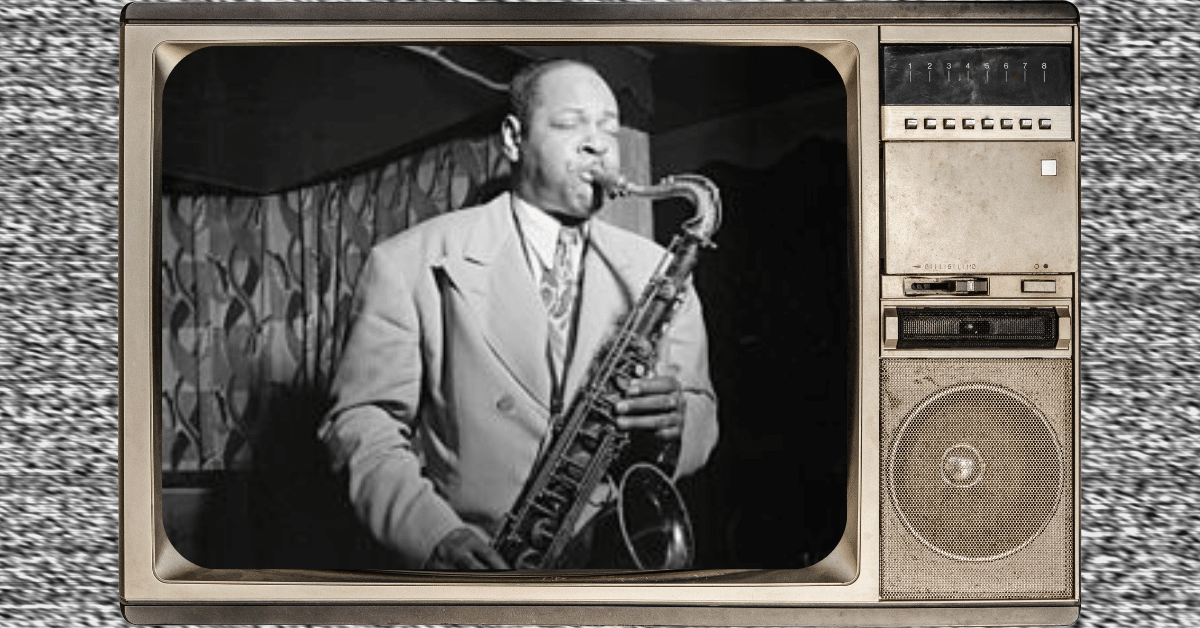In 1959, Coleman Hawkins was at the height of his late-career renaissance. A towering figure in the history of the tenor saxophone — the man who had first given the instrument real authority in jazz back in the 1930s — Hawkins was playing with a freshness that kept him alongside much younger peers.
That year, an unusual project seemed poised to bring him, and jazz itself, into the heart of American homes: a television pilot titled After Hours.
It had all the ingredients of a hit.
A charismatic host. A world-class band. A relaxed nightclub setting. And, most importantly, the music — direct, swinging, and accessible enough to appeal to jazz lovers and curious newcomers alike.
And yet, despite its promise, the show never made it past a single pilot episode.
After Hours: The Pilot
The concept was straightforward.
Each week, viewers would tune in to a half-hour of top-flight jazz, presented in an informal “late-night” setting. Hosting was the New York disc jockey William B. Williams, a popular radio voice with enough polish to guide a mainstream audience into the music.
But the real stars were the musicians. The pilot assembled a line-up that could have held its own on any stage:
- Coleman Hawkins (tenor saxophone)
- Roy Eldridge (trumpet)
- Johnny Guarnieri (piano)
- Barry Galbraith (guitar)
- Milt Hinton (bass)
- Cozy Cole (drums)
- Carol Stevens (vocals)
For repertoire, the producers chose familiar standards, performed with authority and charm.
Hawkins offered a smouldering Lover Man. Eldridge blazed through Sunday. The two traded choruses on a lively duet of Just You, Just Me. And Stevens gave a smooth reading of Taking a Chance on Love.
It was, in effect, a condensed nightclub set transplanted into the television studio.
Why It Mattered
The year 1959 looms large in jazz history for other reasons: Kind of Blue, Giant Steps, The Shape of Jazz to Come. It was an era when the music was evolving rapidly, yet still reaching mass audiences through concerts, radio, and records.
Television, however, remained an elusive frontier.
Variety shows might occasionally book a jazz star, but a dedicated programme built around the music itself was rare.
Had After Hours been picked up, it might have given jazz a regular primetime platform — an opportunity to introduce mainstream audiences to both veterans like Hawkins and the new wave of talent emerging at the time.
Instead, sponsors failed to materialise and the series was quietly shelved. The reasons weren’t musical; they were commercial. Advertisers and networks doubted whether jazz could pull the numbers needed for national television.
Hawkins in Context
For Coleman Hawkins, the pilot came at a moment of renewed relevance. Far from coasting on past glories, he had embraced modern harmonies and was performing alongside younger innovators like Thelonious Monk.
Seeing him in After Hours is a reminder of how his playing retained both the rich tone of the swing era and the harmonic daring that made him admired by beboppers.
Roy Eldridge’s fiery trumpet provided the perfect foil: two generations of jazz improvisers sparring with wit and intensity. Add in rhythm-section stalwarts like Hinton and Cole, and you had a snapshot of mainstream jazz at its most compelling.
The Missed Opportunity
The tragedy of After Hours is not that the pilot was poor — on the contrary, the performances were excellent. The tragedy is that it was never given the chance to grow.
Had it found a sponsor, jazz might have had a weekly showcase at the very moment the genre was still central to American culture.
Instead, its absence reinforced a familiar narrative: jazz remained on records, in clubs, and occasionally on radio or film, but television moved on to other priorities.
Looking back, it’s tempting to imagine what could have been. Would more young listeners have discovered Hawkins and Eldridge if they had appeared on screens across the country each week? Would television have helped keep jazz in the mainstream longer than it ultimately stayed?
A Surviving Document
Thankfully, the After Hours pilot wasn’t lost. It has resurfaced online, offering a rare chance to see Hawkins, Eldridge, and their colleagues in sharp black-and-white footage.
For fans, it’s a fascinating glimpse of both the music and the media landscape of 1959. It’s also a reminder of how precarious jazz’s relationship with mass culture has always been — celebrated in one moment, sidelined in the next.
Hawkins, Eldridge, and their bandmates gave the producers everything they could have hoped for: swing, virtuosity, humour, and accessibility. What they didn’t have was a sponsor.
And so, like so many great jazz projects, it slipped through the cracks. But thanks to the surviving pilot, we can still enjoy the music via the full pilot episode of After Hours here:
Looking for more Hawk? Here’s our pick of some of the standout Coleman Hawkins performances from jazz history.


It was excellent, from Hawk striding thru the
door, taking off his coat, ready to blow !
” . . .let’s do a little Lover man .”
Very good music!!!!
The band was great and its nice to see a tv performance. What I can do without – William B. Williams.